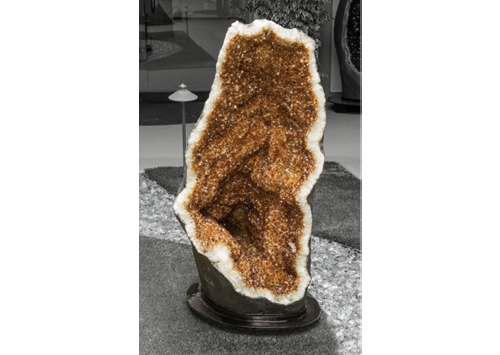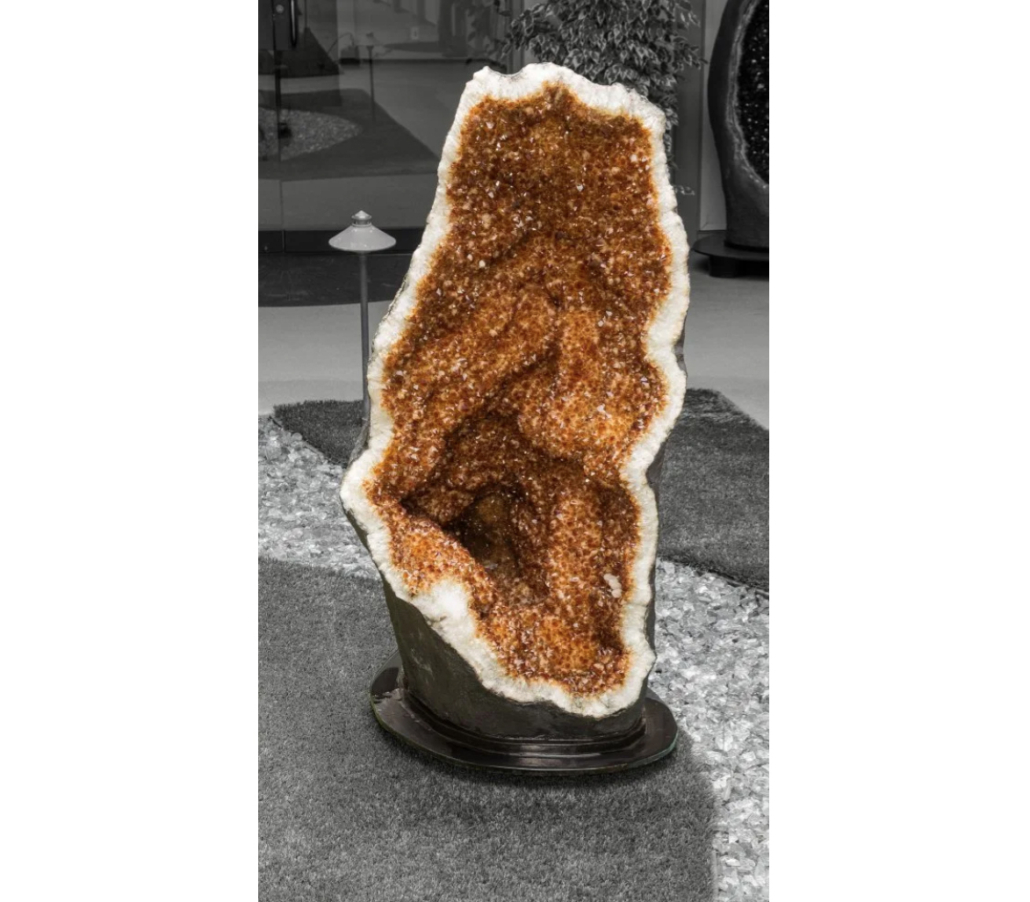
NEW YORK — The latest trend in home decorating involves objects that are thousands and sometimes millions of years old. Geodes — rocks that contain crystals — are all the rage as home accent pieces. While hunting for geodes is an established pastime, the alluring natural history specimens are readily available at auction.
Geodes are found all over the world but are prevalent in volcanic ash beds, deserts and areas known for high deposits of limestone. Lake and river beds sometimes give up these rocks that look plain and unremarkable on the outside, but, when cracked open, yield a trove of sparkling crystals. Geodes form when tiny air bubbles appear in a rock and mineral-rich moisture and meet, trapping water droplets in the bubbles. Crystals then emerge and grow, creating concentric bands or layers inside the rock. Some geodes are discovered packed with a solid mass of crystals while others have an open space, often called a cavity, that is lined with bands of crystals.
Geodes vary in shape from oblong to more rounded and boast almost every color of quartz crystals. Color preferences are, of course, subjective, but many buyers prefer deep shades of purple. Among the most desirable geodes are those containing amethyst crystals (a purple quartz) and those which, when cut, resemble a pair of angel or butterfly wings or take an arch shape. Brazilian citrine geodes in a rich golden-brown color are also sought after. A striking and large pair of natural amethyst geodes dubbed “Angel Wings” due to their shape brought $5,500 plus the buyer’s premium in July 2019 at Greenwich Auction.
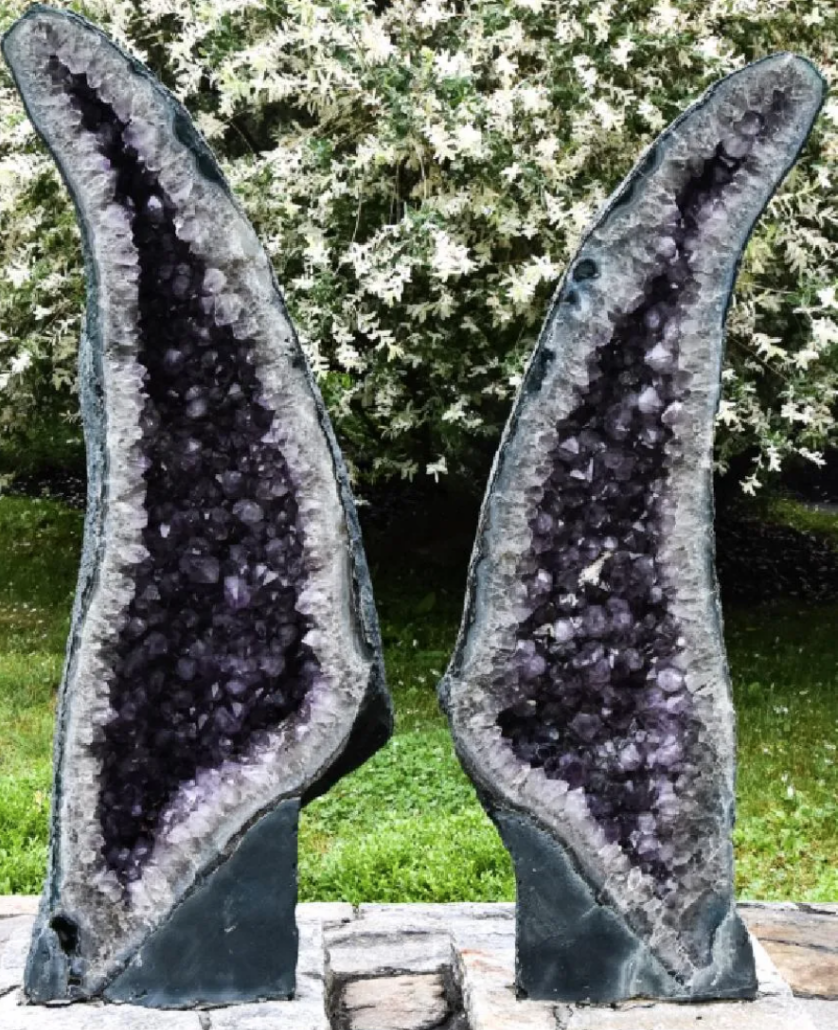
Geodes can be expensive but there are many alluring examples available at reasonable prices. An oblong amethyst geode section sold at Artemis Gallery in July 2019 realized $1,200 plus the buyer’s premium. It is particularly notable for how well it captures the process of the crystals packing in tightly during their formation. The ‘amethyst’ comes from the Greeks and roughly translates to ‘sober.’ An Artemis Gallery catalog notes, “Some scholars suggest that this was due to the belief that amethyst had the power to stave off the effects of alcohol; however, most believe that the Greeks were probably referring to the near wine-like hue of some amethyst stones.”
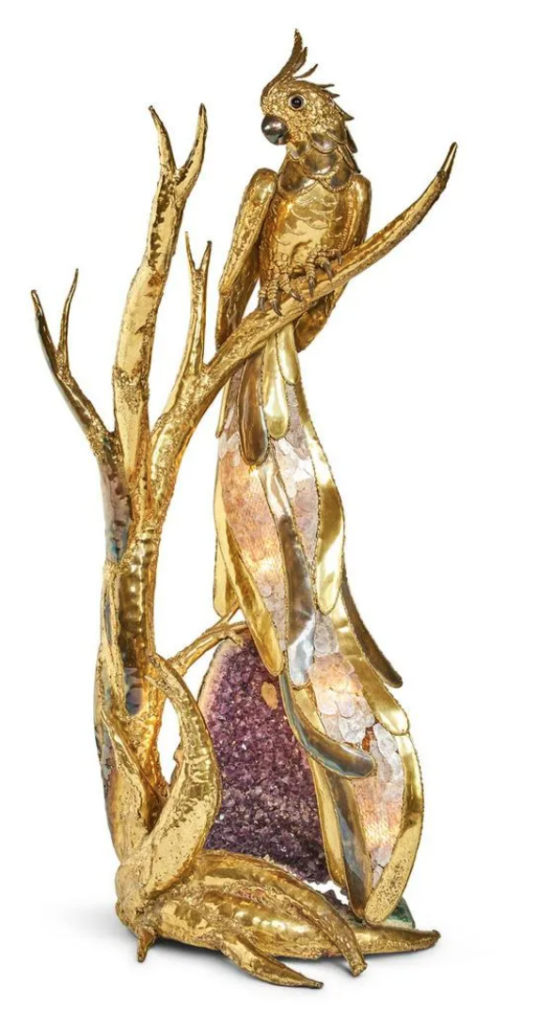
Some collectors liken these nature-made objects to fine art and buyers have proven their willingness to pay a premium for monumental geodes for use as statement design pieces. Geodes can be displayed as-is or made into furniture or decorative items – a far wider range of choices from even the previous century, when they were merely broken apart and fashioned into jewelry or sold by the piece in New Age shops. A brass and amethyst geode illuminated floor lamp made by artist Jacques Duval Brasseur attained $22,627 in January 2021 at Dreweatts Donnington Priory. The French artist is known for his nature-inspired furniture designs. Several lamps he created in the 1970s feature geodes.
While few places on the planet lack caches of geodes, Brazil seems to be loaded with them, especially large ones. A citrine geode measuring 32in by 24in by 48½ in from the Rio Grande do Sul, the southernmost region of the country, made $5,000 plus the buyer’s premium in May 2018 at Heritage Auctions. When amethyst is heated either naturally or artificially, its color changes into a golden citrine hue, as seen in this example. The cavity shows a flow of golden-brown crystals throughout, bordered by a vein of white quartz along the edges.
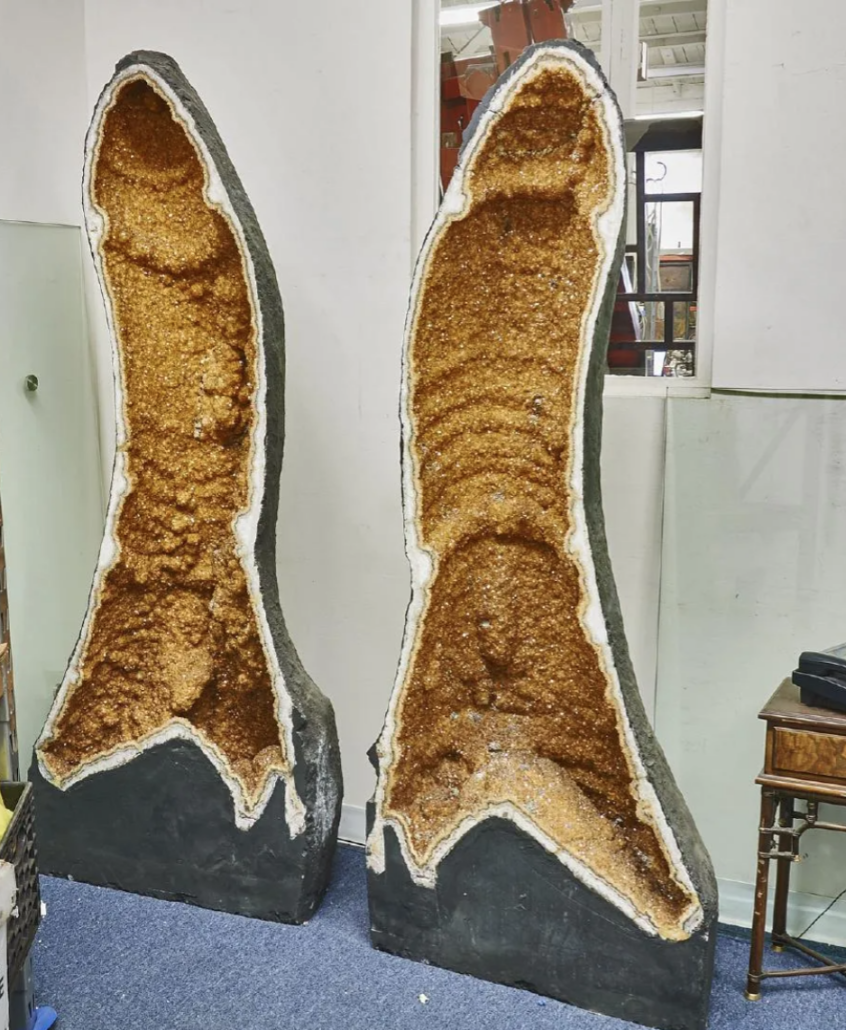
In the realm of geodes, a matched pair will bring more than just one half, however expertly cut that half might be. A huge matched pair of Brazilian citrine geodes, standing 76in tall at its highest point, realized $2,000 in June 2019 at I.M. Chait Gallery/Auctioneers. The auction house’s catalog describes the geode pair as an example of the best citrine from the region not only because of its size but also because of its striking color and the consistent size of its crystals. “The interior is blanketed with glistening crystals in sensual curves and undulations as well as evocative grotto-like pockets,” according to the catalog description.
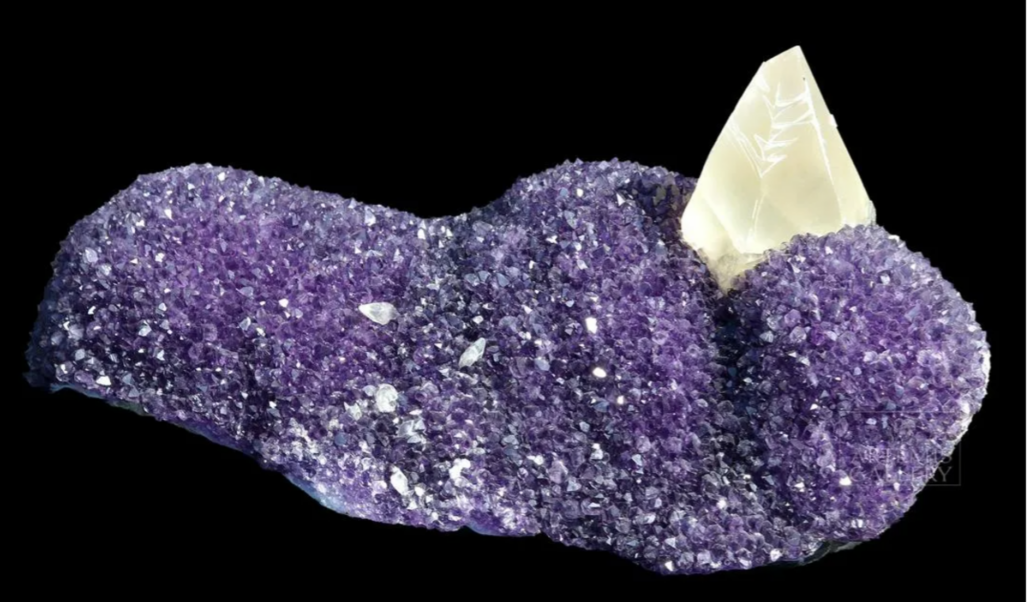
Many ascribe mystical powers to crystals, and amethyst has been alleged to promote healing from addiction as well as to reduce stress and enhance a higher level of consciousness. Citrine is claimed to have a very strong energy. It has also been dubbed the “merchant’s stone,” and some of its fans suggest placing it in a store till or in a corner of the home to attract wealth and good fortune.
Citrine and amethyst geodes could have mystical powers, but they don’t need them. They are beautiful and alluring on their own, no supernatural intervention required. And bringing them into your home, where you can gaze upon them and handle them as you wish, can do much to soothe a troubled soul.


